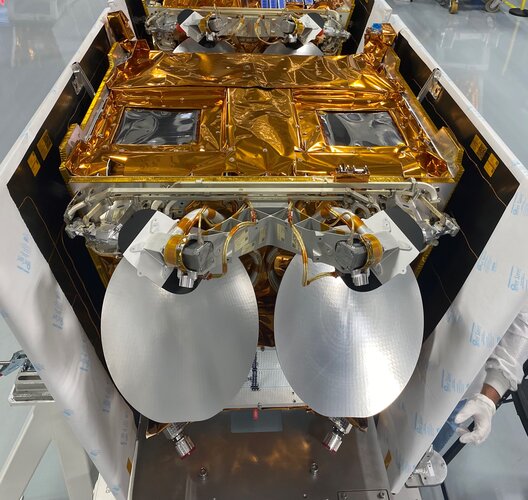The spacecraft – called JoeySat after a baby kangaroo because its beam can hop from place to place – was built and launched in just two years into low Earth orbit on 20 May 2023.
Its innovative design enables the fully digital satellite to switch its beam to where demand for a signal is highest, as well as tracking moving objects, unlike traditional satellites.
It was designed and built using off-the-shelf components and a lean management style under the Sunrise Partnership Project between the European Space Agency (ESA) and satellite operator Eutelsat OneWeb, supported by the UK Space Agency,
Since launch, it has been used to demonstrate connectivity in the air and at sea, and its next-generation 5G connectivity tests have demonstrated business-friendly applications including video streaming, the internet of things, and augmented and virtual reality.
By supporting the development and demonstration of advanced beam-hopping technology, ESA is helping European space companies maintain a competitive edge in the rapidly evolving satellite communications market.
“We are proud to be celebrating the second anniversary of JoeySat, the successes it has delivered, and the future innovation we can look forward to. JoeySat showcases how ESA, its Member States and industry can work together to develop and launch in a very short timeframe a satellite enabling organisations and people to access reliable connectivity wherever and whenever they need it,” said Khalil Kably, ESA Telecommunications Satellite Project Manager.
Guillaume Scottez, Senior Director for Innovation at Eutelsat Group, said: “JoeySat was a key step in proving new technologies like digital beam-hopping and beam-steering capabilities that underpin our next-generation satellites. We’re grateful to ESA and the UK Space Agency for their support in making this milestone possible.”
“As we mark JoeySat’s second anniversary, we’re proud of how this mission has pushed the boundaries of what’s possible in satellite communications,” said Henny Sands, Head of Telecommunications at the UK Space Agency. “It’s a shining example of UK innovation delivering real-world impact and driving forward connectivity solutions.”



